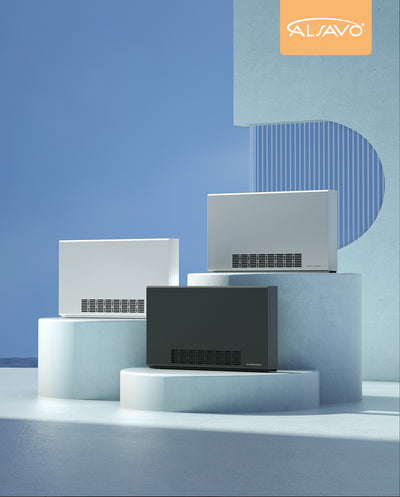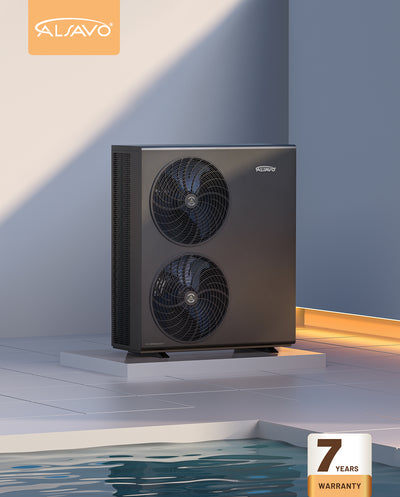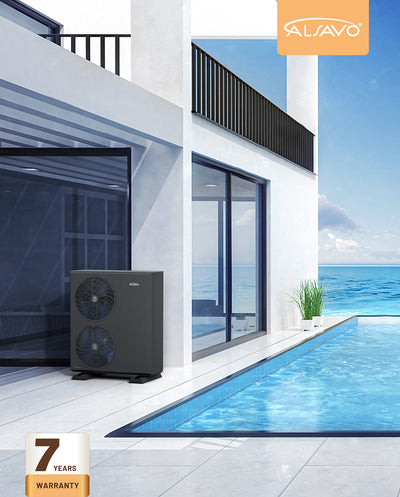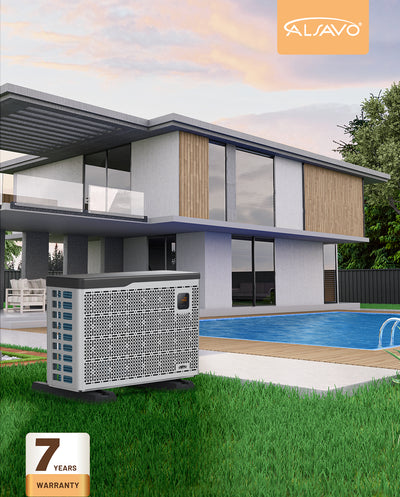Heat pumps are highly efficient heating and cooling systems that have gained popularity in recent years due to their energy-saving capabilities and environmental friendliness. They provide a versatile solution for maintaining comfortable indoor temperatures in residential, commercial, and industrial settings. In this article, we will delve into the inner workings of heat pumps, examining their functioning mechanism in detail. Additionally, we will highlight the significance of air source heat pump manufacturers, heat pump specialists, and the role of air source heat pumps in the overall system.
1. Understanding Heat Pump Basics
At its core, a heat pump is a device that transfers heat energy from one location to another. It operates on the principle of the refrigeration cycle, utilizing a refrigerant to absorb heat from a source and release it in a different location for heating or cooling purposes. The refrigerant's ability to change states between liquid and gas at low temperatures allows it to efficiently transfer heat.
2. The Components of a Heat Pump
A typical heat pump consists of several key components that work together to facilitate the heat transfer process. These components include the compressor, condenser, evaporator, expansion valve, and refrigerant. The compressor plays a vital role in increasing the pressure and temperature of the refrigerant, while the condenser facilitates the release of heat to the surrounding environment. The evaporator absorbs heat from the source, and the expansion valve controls the flow and pressure of the refrigerant.
3. The Refrigeration Cycle
The refrigeration cycle lies at the heart of a heat pump's functioning mechanism, enabling the efficient transfer of heat energy. This cycle comprises four main stages: compression, condensation, expansion, and evaporation. During the compression stage, the refrigerant, typically a fluid with excellent heat transfer properties, is compressed by the compressor. This compression increases both the temperature and pressure of the refrigerant. Next, in the condensation stage, the high-pressure refrigerant releases heat to the surrounding environment, causing it to transition from a gas to a liquid state. This heat transfer process results in the cooling of the refrigerant. The expansion valve then regulates the flow and pressure of the refrigerant, preparing it for the evaporation stage. In the evaporation stage, the refrigerant evaporates in the evaporator, absorbing heat from the source, such as ambient air or the ground. This absorption of heat causes the refrigerant to transform back into a gas state. The refrigeration cycle then repeats, ensuring a continuous transfer of heat energy and maintaining the desired temperature indoors. Through this cycle, heat pumps can extract heat from low-temperature sources and deliver it to the desired location for effective heating or cooling.
4. Heating Mode vs. Cooling Mode
One of the distinguishing features of heat pumps is their ability to operate in both heating and cooling modes, providing year-round comfort. In the heating mode, a heat pump extracts heat energy from the outside environment, whether it's from the ambient air, ground, or water source. This heat energy is transferred to the indoor space through the condenser, raising the temperature and providing warmth. By utilizing the refrigeration cycle in reverse, heat pumps can effectively extract and transfer heat even in colder temperatures. In the cooling mode, the heat pump reverses the refrigeration cycle, absorbing heat from the indoor space and releasing it outside. This process creates a cooling effect, maintaining a comfortable temperature indoors during hot weather. The ability to seamlessly switch between heating and cooling modes makes heat pumps highly versatile and efficient solutions for temperature control in various climates and seasons.
5. The Role of Air Source Heat Pump Manufacturers
Air source heat pump manufacturer is responsible for designing, manufacturing, and supplying high-quality air source heat pumps. These manufacturers invest in research and development to improve the efficiency and performance of their products. They utilize advanced technologies, such as variable-speed compressors and smart controls, to optimize energy consumption and enhance overall system efficiency. Air source heat pump manufacturers ensure that their products meet rigorous quality standards and regulatory requirements. They collaborate with heat pump specialists and professionals to gain insights into market needs and customer feedback, allowing them to continuously innovate and improve their product offerings. By providing reliable and efficient air source heat pumps, manufacturers contribute to the widespread adoption of sustainable heating and cooling solutions, reducing reliance on fossil fuels and minimizing environmental impact.
6. Heat Pump Specialists: Expertise and Support
Heat pump specialists play a pivotal role in the heat pump industry, offering their expertise and support to ensure optimal performance and customer satisfaction. These professionals possess extensive knowledge of heat pump systems, including their design, installation, and maintenance. With their in-depth understanding of heat pump technology, they can accurately assess the heating and cooling requirements of a building or space and recommend the most suitable heat pump solution. Heat pump specialists also stay updated on the latest advancements in the industry, enabling them to provide valuable insights and guidance on energy-efficient practices and system integration. Their expertise and support ensure that heat pump systems are installed correctly, operate efficiently, and deliver long-term reliability. Whether it's troubleshooting issues, conducting system inspections, or providing ongoing maintenance, heat pump specialists are invaluable resources for individuals and businesses seeking optimal performance and comfort from their heat pump systems.
7. The Advantages of Air source heat pump
Air source heat pumps offer numerous advantages, making them a popular choice for both residential and commercial applications. They are highly efficient, capable of providing up to four times the amount of energy they consume. This energy efficiency translates into significant cost savings and reduced environmental impact. Air source heat pumps also offer versatility, as they can be used for both heating and cooling purposes. They are relatively easy to install, requiring less space compared to other heating systems, and they operate quietly, providing a comfortable and quiet indoor environment.
Understanding the inner workings of heat pumps is essential for appreciating their functionality and benefits. With their ability to transfer heat energy, heat pumps provide efficient and environmentally friendly heating and cooling solutions. The involvement of air source heat pump manufacturers and heat pump specialists ensures the availability of high-quality systems and expert support. Air source heat pumps, with their versatility and energy-saving capabilities, have become a valuable asset in the pursuit of sustainable and comfortable indoor environments. By exploring the functioning mechanism of heat pumps and leveraging the expertise of industry professionals, we can embrace the advantages of this advanced technology and contribute to a greener future.






